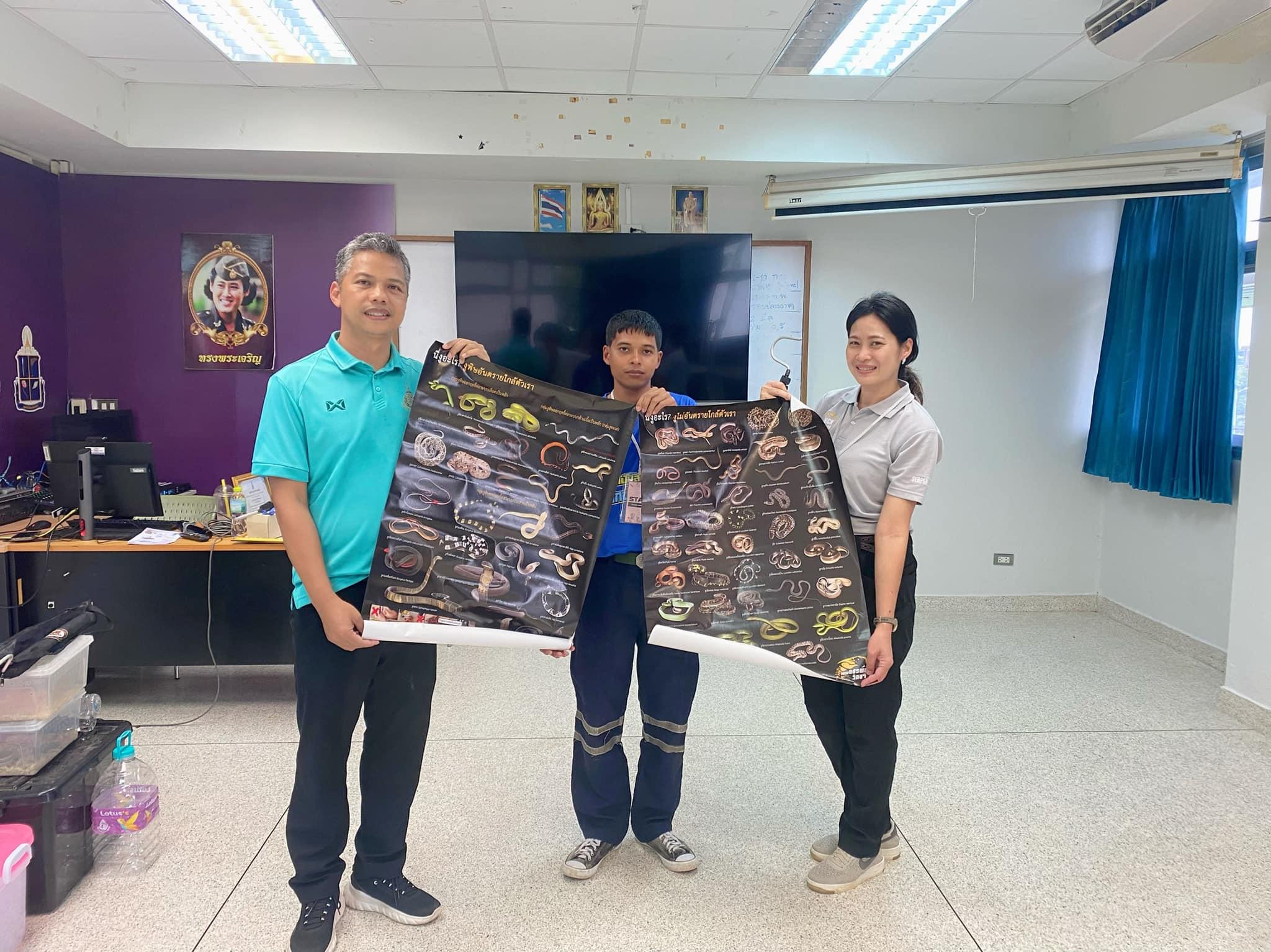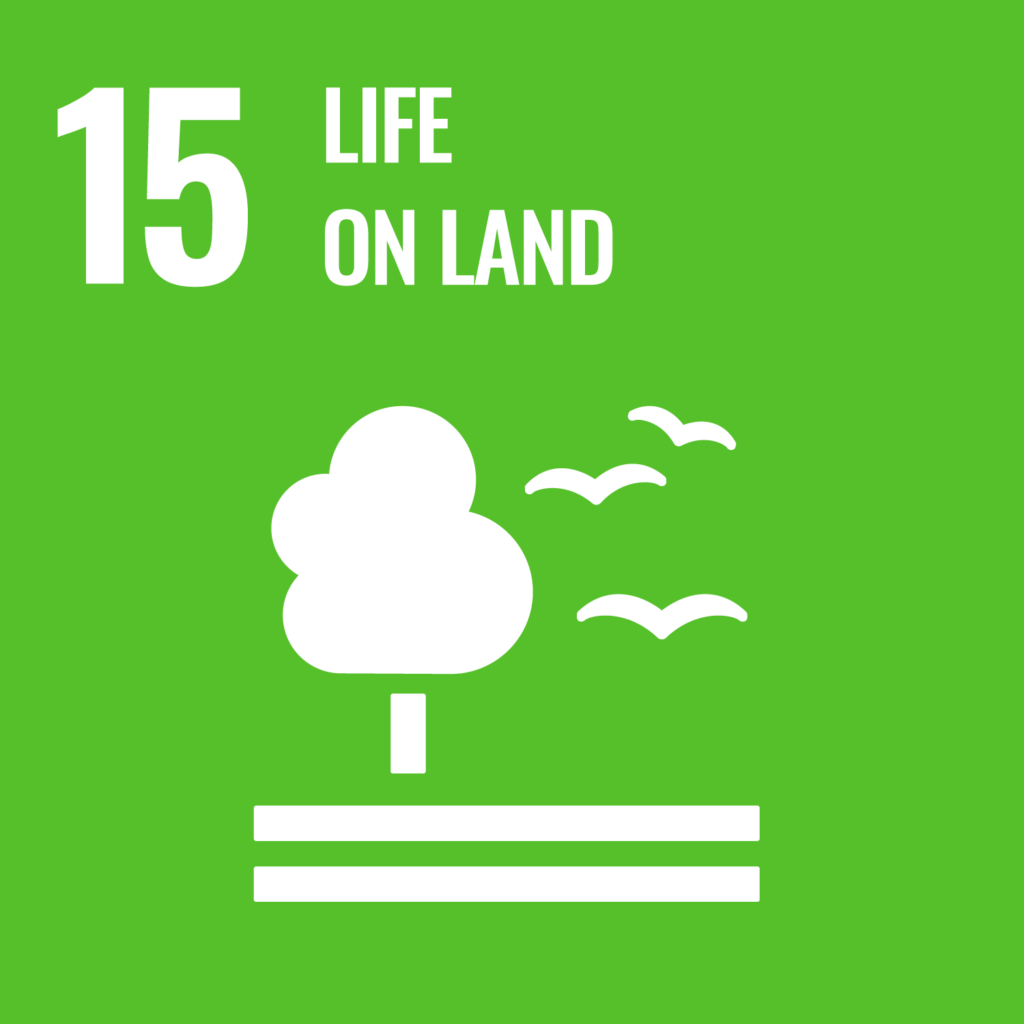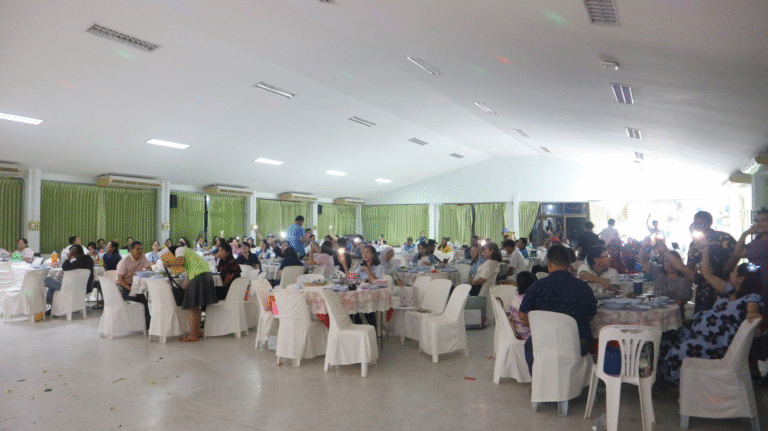Reporters: Asst.Prof.Dr. Prapot Maliwan
Assoc.Prof.Dr. Pornsil Seephueak
Asst.Prof.Dr. Nion Chirapongsathonkul
Asst.Prof.Dr. Worawitoo Meesook
Evidence Date: during 2024 Jan-Dec
Related Indicators: 15.2.3
Details:
Educational outreach focusing on the importance of snakes in ecosystems. The first activity was held at PSU Wittayanusorn School, Songkhla Province, on the occasion of the school’s anniversary, 26 January 2024. Students were introduced to the secrets of snakes, which are often misunderstood animals but play crucial ecological roles. The program highlighted how snakes control pest populations, maintain ecological balance, and contribute to biodiversity. Special attention was given to deadly venomous snakes and their classification, helping students distinguish between dangerous and harmless species. The venom system was explained in detail, including the different types such as neurotoxin, haemotoxin, myotoxin, and cytotoxin. This scientific knowledge was shared in a simple and engaging way suitable for high school learners. Students also learned how to respond safely if they encounter a snake in the wild or near their community. Basic steps for first aid in cases of snakebite were carefully demonstrated to ensure understanding. The activity combined science education, practical safety training, and conservation awareness in a way that directly connected with students’ daily lives.
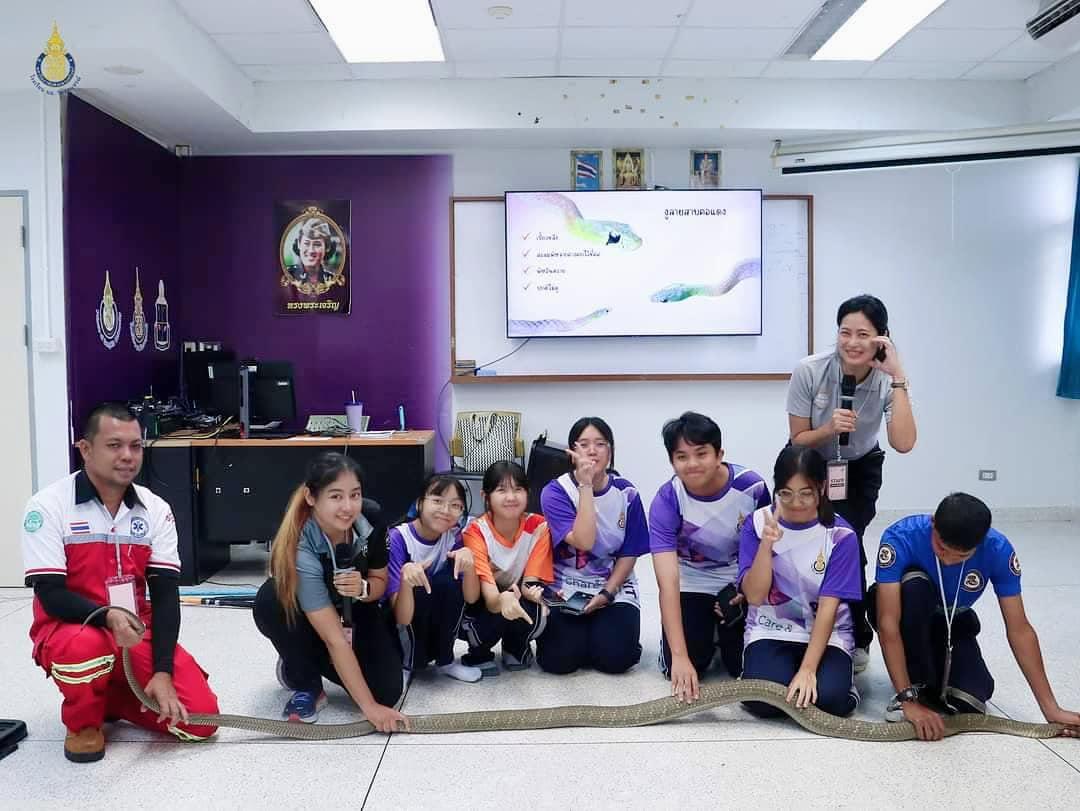
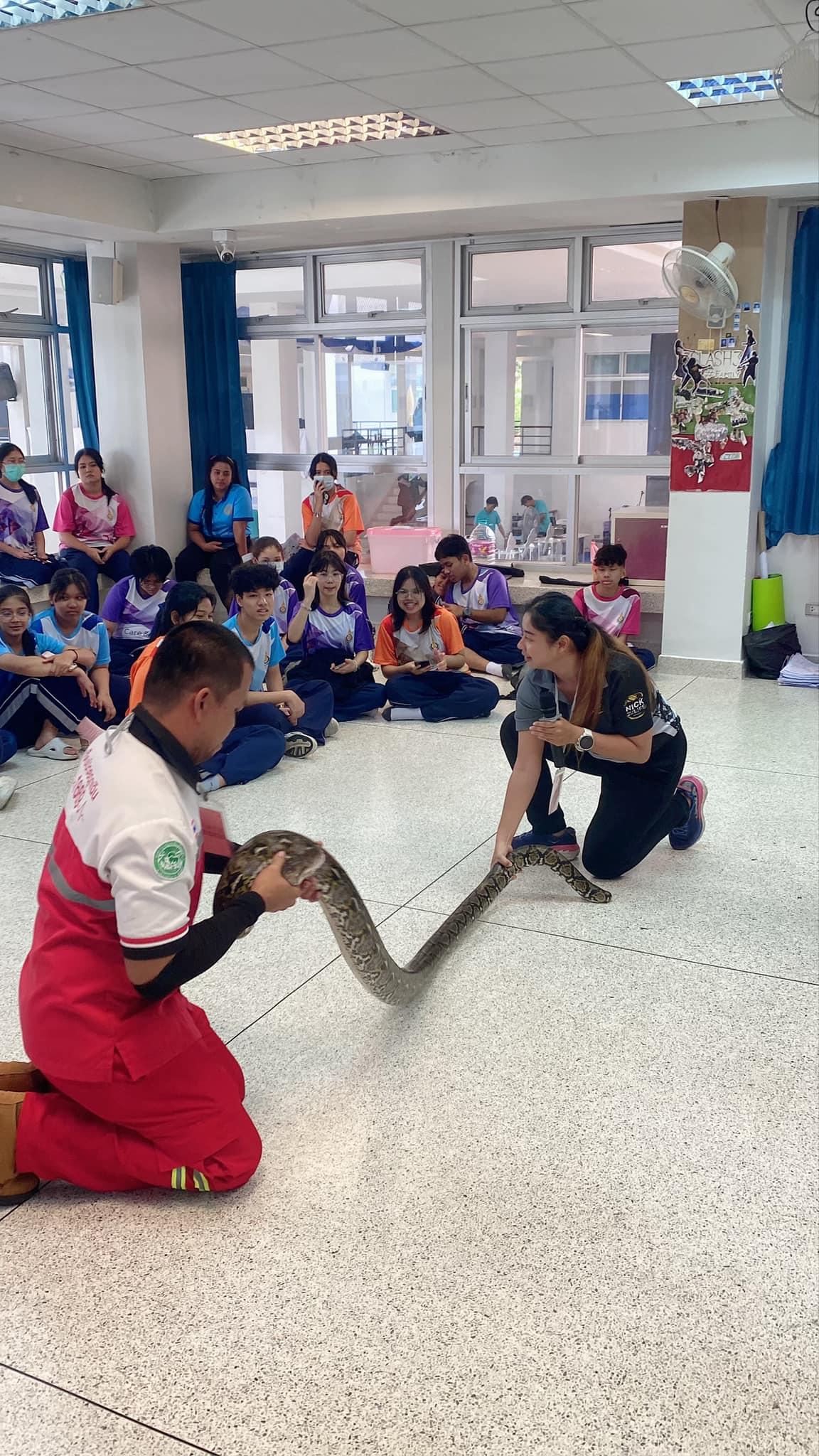
A second activity with a similar focus was organized at Thung Song Wittaya School, Nakhon Si Thammarat Province. Like the first program, this event introduced students to the ecological importance of snakes and their role in biodiversity. The lessons on venomous snake classification were repeated, ensuring that students understood the risks associated with different species. The venom system was again explained with clear examples, reinforcing scientific knowledge about how toxins affect humans and prey. Demonstrations of safe behavior during snake encounters were provided, with teachers and trainers guiding students step by step. Emphasis was placed on keeping calm, avoiding unnecessary harm to snakes, and contacting trained personnel for help. Students practiced basic first aid knowledge for snakebite, which is a critical life skill in rural and suburban areas. The activity was designed to be interactive, encouraging students to ask questions and share their experiences with snakes. By repeating these activities in multiple schools, the project reached a broader audience and built consistency in learning outcomes. The success of the Thung Song Wittaya program reflected the strong interest of students in both safety and biodiversity. Together, both activities strengthened the message that snakes should be respected as valuable parts of nature rather than feared without reason.
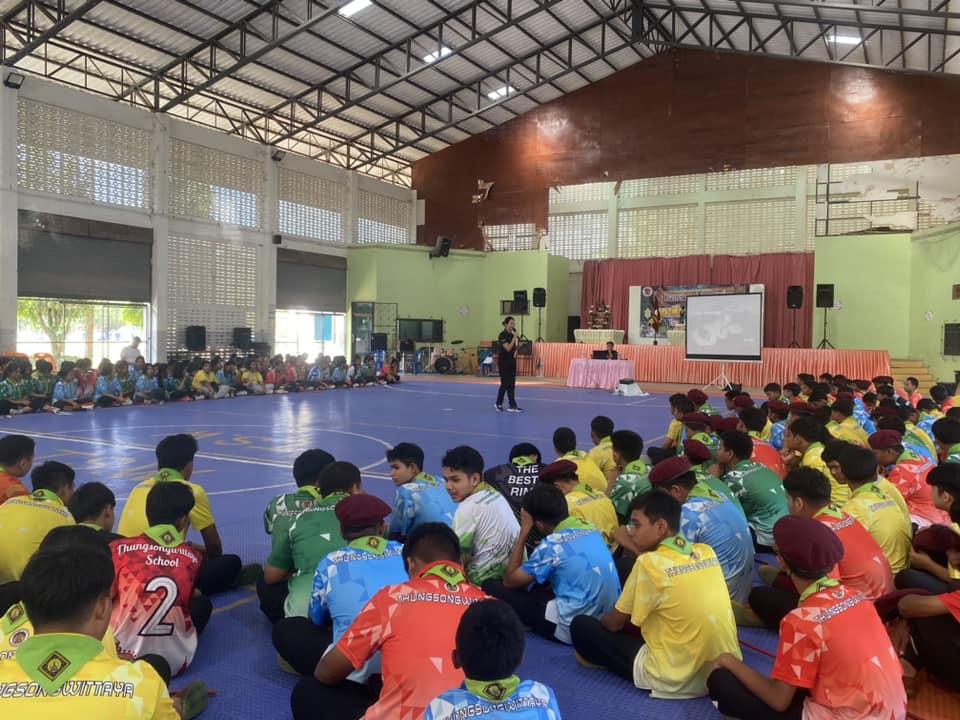
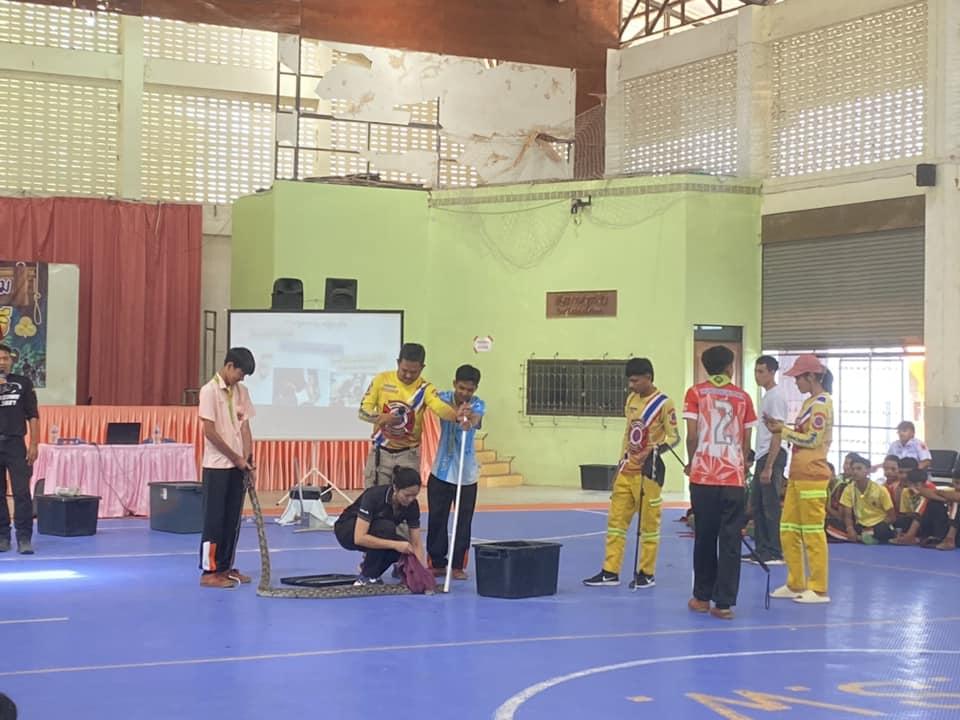
Bringing together the activities at PSU Wittayanusorn School and Thung Song Wittaya School shows how powerful learning can be when young people are given the chance to explore biodiversity. Both programs aimed to connect scientific knowledge with everyday safety, while also inspiring students to care for the natural world around them. By learning about snakes, animals that are often feared or misunderstood, students discovered their hidden importance in keeping ecosystems healthy. The lessons encouraged respect for all living things, reminding students that even venomous snakes have valuable roles in nature. Exploring different venom types and snake classifications gave students a deeper appreciation for the complexity of wildlife. Practical training on what to do if they encounter snakes, along with first aid for snakebites, provided life skills that they can carry with them. These activities were designed not only to teach facts but also to guide students toward becoming responsible caretakers of their environment. Working together with teachers and conservation trainers showed students the importance of cooperation in protecting biodiversity. The experience proved that young people can be leaders in conservation when they are given the right knowledge and guidance. In the end, the project taught students that protecting biodiversity begins with awareness, respect, and small actions they can take every day.
